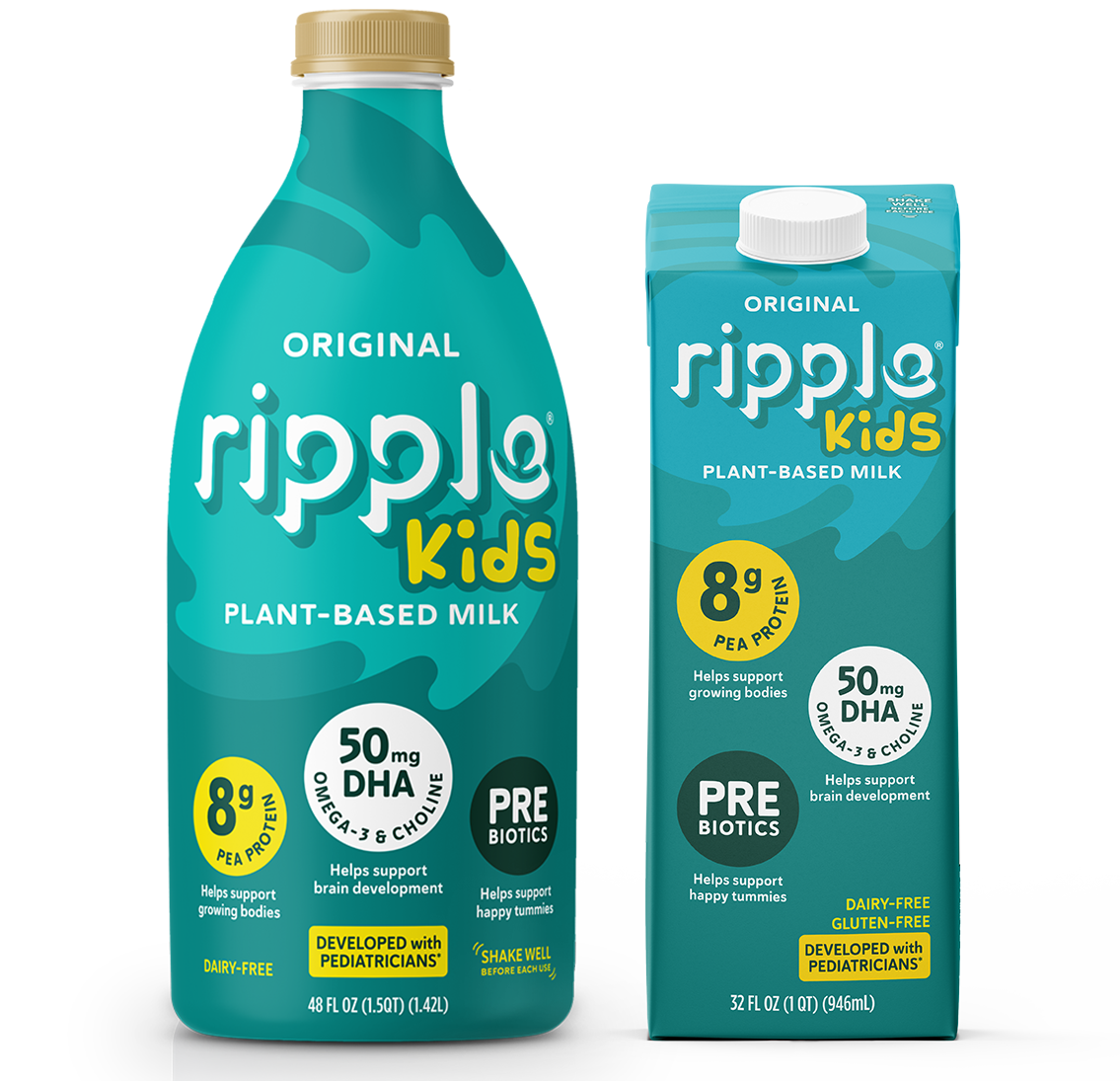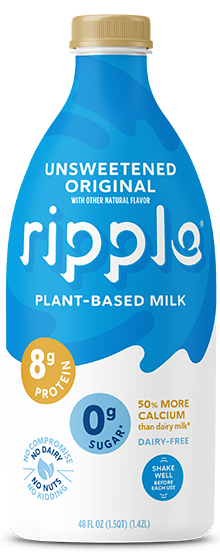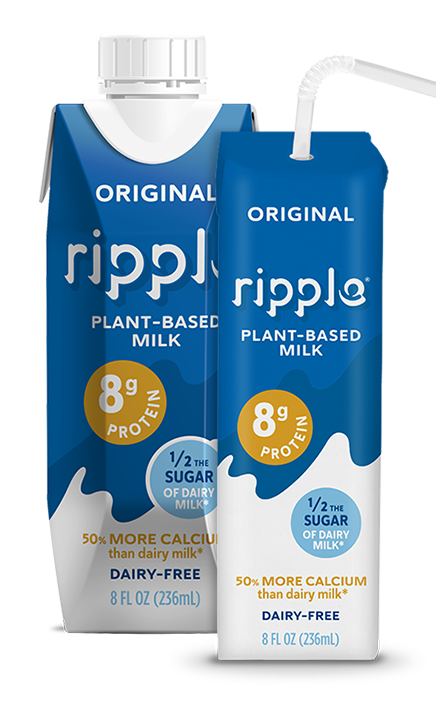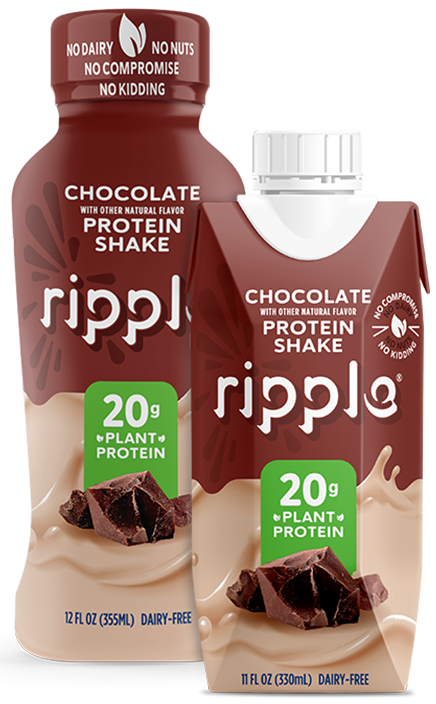
Ripple Kids
Original Plant-Based Milk
48oz Milk
Also available in 32oz shelf-stable packaging and 8oz On-The-Go perfect for stocking the pantry.

Developed with Pediatricians1 for Early Childhood Nutrition
Can smart choices really be delicious? We say ‘YES’! When you choose dairy free, you shouldn’t have to compromise on nutrition or taste. Now we’ve made something especially for your little ones.
Ripple Kids was developed with Pediatricians1 to deliver key nutrients specific for growing kids. In addition to the 8g of plant-based protein from peas, Ripple Kids has 50mg DHA, choline, and prebiotic fiber for growing bodies, along with many of the essential nutrients found in dairy milk - calcium, magnesium, riboflavin, and vitamins A, D, and B12. And most important, it delivers the same creamy and delicious taste kids love!
- 50mg DHA Omega-3’s to help support developing brains1
- Choline to help transport DHA for brain-building nutrition
- Prebiotic Fiber
- 8g of plant-based protein
Nutrition
Serving Size 1 cup (240mL)
140 Calories
8g Protein
8g Total Fat
8g Carbs
5g Sugars
125mg Sodium
- Saturated Fat
- Trans Fat
- Polyunsaturated Fat
- Monounsaturated Fat
- Cholesterol
- Dietary Fiber
- Potassium
- 1g
- 0g
- 1g
- 6g
- 0mg
- 2g
- 544mg
- Calcium
- Iron
- Vitamin A
- Vitamin D
- Vitamin B12
- Choline
- Magnesium
- 455mg
- 1mg
- 90mcg
- 6mcg
- 1.1mcg
- 55mg
- 24mg
Ingredients
WATER, PEA PROTEIN BLEND (WATER, PEA PROTEIN), VEGETABLE OIL (SUNFLOWER OR SAFFLOWER OIL), CANE SUGAR, CONTAINS LESS THAN 1% OF SOLUBLE CORN FIBER, MAGNESIUM CITRATE, RIBOFLAVIN, VITAMIN B12, DHA ALGAL OIL, CHOLINE BITARTRATE, VITAMIN A PALMITATE, VITAMIN D2, DIPOTASSIUM PHOSPHATE, TRICALCIUM PHOSPHATE, SUNFLOWER LECITHIN, SEA SALT, NATURAL FLAVOR, GUM ARABIC, GUAR GUM, GELLAN GUM, WITH ROSEMARY EXTRACT, MIXED TOCOPHEROLS, AND ASCORBYL PALMITATE TO PRESERVE FRESHNESS.
*Pertains to U.S. Products OnlyWhy Yellow Peas?
Peas are an excellent source of protein, setting Ripple apart from other plant-based beverages that have little to no protein. Ripple uses a proprietary method to harvest protein from peas, removing impurities to leave a clean, neutral taste.
And, peas have a small environmental footprint, unlike almonds, which require irrigation, or cattle, which contribute to deforestation and greenhouse gas emissions. Yellow peas also grow in areas that receive lots of rain, so they need little or no irrigation, and little or no fertilizer.


